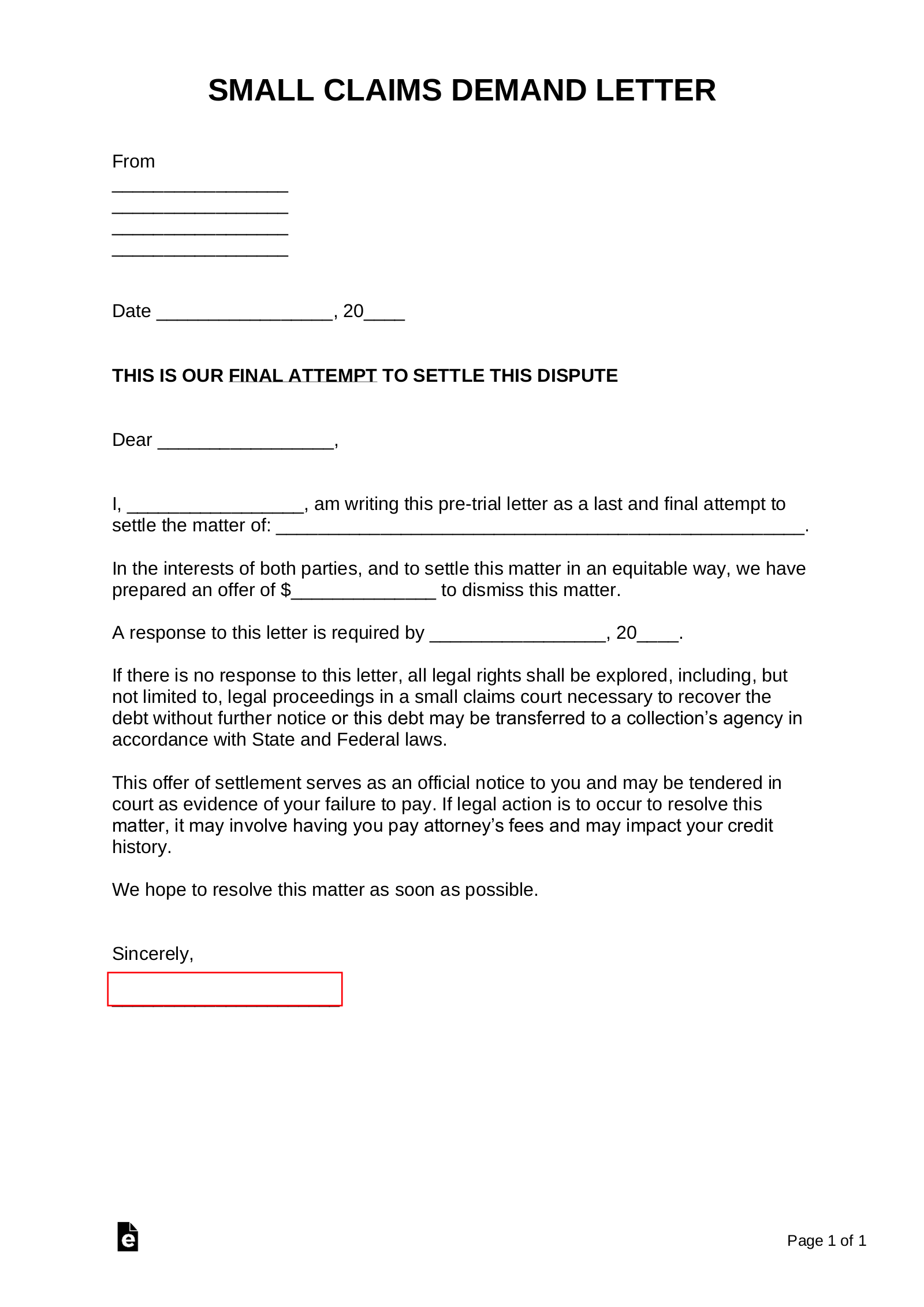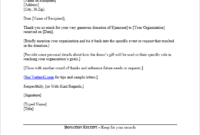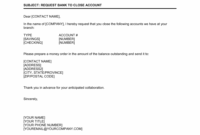Navigating a dispute where you are owed money or property can be frustrating, and the idea of going to court might feel overwhelming. Before you even consider filing a formal lawsuit in small claims court, there is a crucial first step that many people overlook: sending a demand letter. This simple yet powerful document can often resolve conflicts without the need for legal proceedings, saving you time, stress, and money.
A demand letter serves as a formal communication outlining your claim, the amount owed, and what you expect from the other party to resolve the issue. It clearly states your position and intentions, giving the recipient a chance to address the problem before things escalate. Think of it as a professional olive branch, offering a clear path to resolution while also demonstrating your seriousness about pursuing your claim if necessary.
Understanding the Purpose and Power of a Demand Letter
A well-crafted demand letter is much more than just a polite request; it is a strategic tool in conflict resolution. Its primary purpose is to clearly articulate your grievance and the desired outcome, all while signaling your willingness to pursue further legal action if your demands are not met. This initial step can often prompt the other party to take your claim seriously, as it demonstrates that you are organized and prepared to protect your interests. It creates a formal record of your attempt to resolve the matter amicably, which can be invaluable evidence should the dispute proceed to small claims court.
Furthermore, sending a demand letter gives the recipient a clear opportunity to respond and rectify the situation before incurring additional legal fees or facing the scrutiny of a judge. It sets a professional tone for communication, often leading to negotiations or a settlement that satisfies both parties without ever stepping foot inside a courtroom. Many small claims courts actually encourage or even require that you attempt to resolve your dispute through a demand letter before filing a lawsuit, underscoring its importance in the legal process.
Imagine a scenario where you loaned money to a friend, or perhaps a contractor failed to complete work as agreed. A demand letter provides a structured way to lay out the facts, refer to any agreements, and state the exact amount or action you are seeking. This clarity can prevent misunderstandings and often leads to a quicker resolution than simply calling or emailing the person repeatedly without a formal structure.

Essential Components of Your Demand Letter
To be effective, your small claims demand letter template should include several key pieces of information. These elements ensure that your letter is clear, legally sound, and leaves no room for ambiguity regarding your claim.
- Your full name and contact information.
- The full name and contact information of the recipient.
- The date the letter is being sent.
- A clear and concise statement of the facts leading to the dispute, including dates and relevant details.
- The specific amount of money owed or the action you are demanding, supported by any calculations or documentation.
- A reasonable deadline for the recipient to respond or comply with your demands.
- A statement indicating your intention to pursue legal action in small claims court if the demands are not met by the specified deadline.
- A list of any attached supporting documents, such as contracts, invoices, emails, or photographs.
- Your signature.
Crafting Your Demand Letter for Maximum Impact
When you are ready to write your demand letter, remember that clarity and professionalism are paramount. Avoid emotional language, threats, or insults. Instead, focus on presenting the facts in a calm, objective manner. Each statement should be backed by evidence, and you should explicitly refer to these supporting documents within the letter itself. A professional tone helps to ensure your letter is taken seriously and demonstrates your commitment to a fair and legal resolution. This is not the time for venting frustrations but for presenting a solid case.
Carefully organize your thoughts before you begin writing. Outline the sequence of events chronologically, making sure every detail is accurate and verifiable. Mention any previous attempts you have made to resolve the issue, such as phone calls or informal emails, as this further demonstrates your good faith efforts. By creating a comprehensive and factual account, you strengthen your position and make it difficult for the recipient to ignore your request or dispute the core facts.
It is also vital to set a clear and reasonable deadline for the other party to respond or comply with your demands. Typically, ten to thirty days is considered appropriate, giving them enough time to review your letter, consult with their own advisors if necessary, and formulate a response. Be sure to state the consequences of failing to meet this deadline, which is usually that you will proceed with filing a claim in small claims court without further notice. This sets a firm expectation and emphasizes the seriousness of the situation.
Finally, consider how you will send your demand letter. Using certified mail with a return receipt requested is highly recommended. This provides you with proof that the letter was sent and, more importantly, proof that it was received by the intended party. In a small claims case, a judge will often ask if you attempted to resolve the issue before coming to court, and having documented proof of your demand letter can be a significant advantage. This methodical approach is key to transforming a basic small claims demand letter template into an effective legal instrument.
Taking the Next Step Towards Resolution
Sending a clear and well-documented demand letter is an incredibly powerful first step in resolving disputes. It offers a structured and professional way to communicate your expectations and can often lead to a satisfactory resolution without the necessity of formal court proceedings. By laying out all the facts, your demands, and the potential next steps, you provide the other party with a clear incentive to address the matter promptly.
Remember, preparation and clarity are your greatest assets when seeking to recover what is owed to you. This initial outreach not only serves as a strong signal of your resolve but also creates a valuable paper trail should further action become necessary. By utilizing a thoughtfully prepared letter, you empower yourself to resolve conflicts efficiently and effectively, potentially avoiding the complexities and costs associated with a full-blown legal case.



